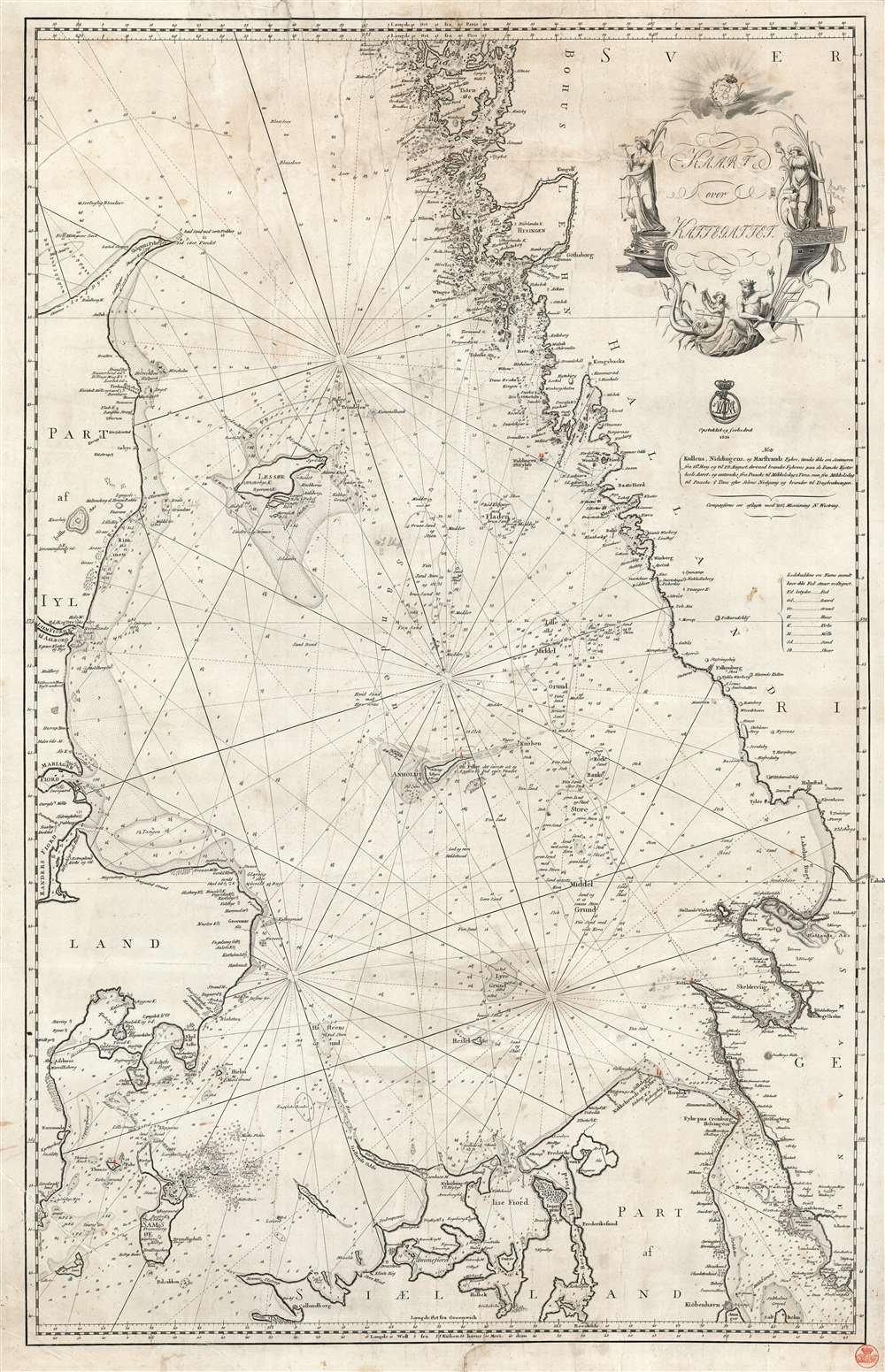1820 Royal Danish Nautical Charts Archive Nautical Chart of the Kattegat
Kattegatet-royaldanishchart-1820
Title
1820 (dated) 35.25 x 22.75 in (89.535 x 57.785 cm) 1 : 350000
Description
The Kattegat
Bordered by the Jutland Peninsula to the west and Sweden to the east, the Kattegat is a shallow sea that can be dangerous and difficult to navigate. Sandy and stony reefs abound, and it's tricky currents shift regularly. Before the completion of the Eider Canal in 1784, the Kattegat was the only way to access the Baltic region by sea. The Danish royal family began imposing dues on shipping in 1429. The dues were then continued by Denmark until 1857. Today, a network of improvements has been created to safeguard the immense amount of international maritime traffic that passes through the region. Many of its reefs have been dredged and several artificial channels have been dug. An extensive light-signaling network has also been installed.This map was created by the Royal Danish Nautical Charts Archive and published in 1820. Two examples are cataloged in OCLC and are part of the institutional collections at the Bibliotheque nordique in Paris and the Royal Danish Library in Copenhagen.
Cartographer
The Royal Danish Chart Archive (1784 - 1973) or Det Kongelige Danske Søkaart-Archiv was established by the Danish Crown in 1784. Impressed by the French Dépôt des Cartes de Marine, the crown recruited Captain Lieutenant Poul de Løwenørn to act as the first director of the archive. Løwenørn collected nautical charts from all parts of the world. The archive later began issuing its own charts, often improving and updating older charts. The archive was merged with the Nautical Chart Archive and Life Guard in 1973. More by this mapmaker...

